Features
‘Women were never these little fragile beings society likes to portray’

Ultra-marathon runner and founder Hélène Guillaume on women’s health, inequality and WILD AI
“Keep it going” reads my recent notification on my smartwatch after a sweaty spin class. For someone who found it difficult to start exercising after multiple lockdowns, such reminders do make a difference. So naturally, I was excited about WILD AI – an app designed to help women train, recover and eat based on their menstrual cycle.
Unlike other fitness apps, WILD AI is made for the needs of the female body – think menstruation, pregnancy or menopause. Based on daily check-ins such as heart rate, sleep, menstrual cycle, contraception and physical activity, the app gives you a readiness score as well as advice for training, nutrition, recovery, supplement needs and mental state.
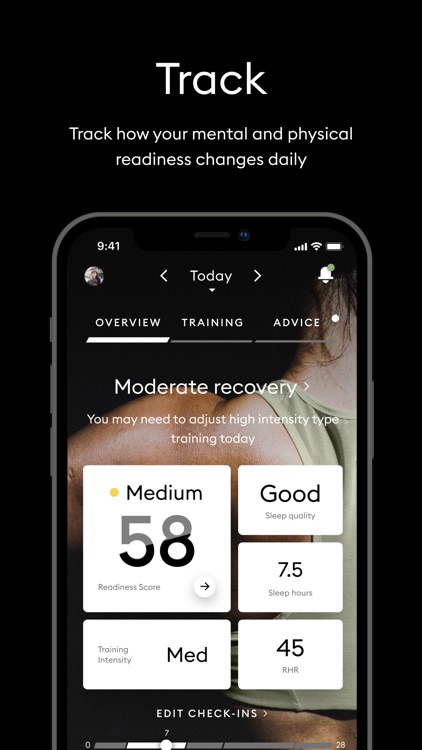
“By tracking things, every day you have a very good understanding of your readiness score and you become more aware of your body,” says Hélène Guillaume, ultra-marathon runner, triathlete and founder of WILD AI. “Our hormones and daily habits are a lot more impactful than most of us would think and when you don’t understand that, you go against your body. So, our aim is to help women understand their body and take advantage of its full potential.”
Guillaume’s background in science made her aware of the data gap in sports especially in women. As an ultra-marathon runner, rugby player, triathlete and ice-swimmer, she has struggled herself with a system exclusively made for men. “80 per cent of the medical research to today is made on men.
“Women have no visibility. Until very recently, we haven’t been involved in any research at all and the commonality was that women were a subset of men. We were supposed to do things at a smaller scale, hoping it would work out.
“But that didn’t take into consideration that not only do we have a menstrual cycle for years, but we also go through big life stages that completely change our bodies,” the entrepreneur explains.
“So, with WILD AI, we are aiming to change entirely the notion of what a woman is. Because we were never these fragile little beings that society likes to portray. We are incredibly strong and powerful.”
The lack of support is one of the things that has led to different misconceptions, Guillaume thinks. “Women and girls don’t understand what is happening to their bodies. A big misconception is that you would perform less well during your period. Also, words like perimenopause and menopause are still very misunderstood.”
But it’s not just about support. The fashion industry along with the rise of the diet culture have also fuelled unhealthy approaches in women’s health. “We follow these traditional diets that were created for men, but that actually have the opposite effect of what we’re expecting,” says Guillaume.
“As women, we go to the gym as often as guys, we start training, exercising like crazy and starving ourselves. But then we end up with belly fat, because our body, as opposed to the male body, is getting into starvation mode and it starts to stock up.
“So, we need to change this mentality around what is a good looking woman. Otherwise young girls will continue to struggle with body dysmorphia and other eating disorders,” the ultra-marathon runner adds. “We’ve been for so long celebrating these androgynous bodies that are actually not healthy at all. A skinny girl with no periods is not healthy, but it’s never portrayed like that. A female body has curves and that’s what we should consider normality.”
Things like going to the gym and lifting weights are extremely important, says Guillaume, but tailored in a way that would suit women. “The life transitions that we go through as women are opportunities to understand our body and to choose to harness the power of it. When you understand this, the female body becomes an incredibly powerful machine.”
Guillaume hopes that ultimately, more women will start to embrace sport and nutrition for a healthier lifestyle rather than a weight loss goal. “We have really high ambitions and we want to become the technology for women so that every single woman in the world would have access to the power and tools to perform”, she tells me.
“Interception is the capacity to understand what’s happening in your body and this what we aim to achieve with WILD AI too. Once you learn to do that, you can really reduce the negative symptoms and push on the positives.”
WILD AI is available in App Store and Google Play.
Entrepreneur
How femtech can navigate the EU medical device and AI rules

By Xisca Borrás, Partner – Life sciences regulatory and Ellie Handy, Senior Associate – Life sciences regulatory, Bristows
As femtech is intrinsically linked to health needs, a key question for femtech products is whether they are regulated as medical devices or merely consumer products.
Additionally, many femtech products are embracing the use of artificial intelligence (“AI”).
Therefore, another key question is whether products using AI will be regulated as “high-risk” AI systems under the EU’s new AI legal framework.
This article looks at when femtech apps and software qualify as medical devices in the EU and how the medical device and AI legal frameworks interact.
What is a software medical device?
The definition of “medical device” in the EU’s Medical Device Regulation 2017/745 (the “EU MDR”) includes software, used alone or in combination, that is intended by its legal manufacturer for a medical purpose.
These medical purposes are listed in the EU MDR and include (amongst others):
- diagnosis, prevention, monitoring, prediction, prognosis, treatment or alleviation of disease;
- diagnosis, monitoring, treatment, alleviation of, or compensation for, an injury or disability; and
- control or support of conception.
The legal manufacturer is the person that puts their name/branding on the device, and takes responsibility for it.
Whether software is considered a medical device will depend on whether the manufacturer states it has a medical purpose in the relevant documentation/materials.
The EU MDR defines intended purpose as “the use for which a device is intended according to the data supplied by the manufacturer on the label, in the instructions for use or in promotional or sales materials or statements and as specified by the manufacturer in the clinical evaluation” [emphasis added].
What is the test for qualifying as a medical device in the EU?
There is a selection of guidance documents that can assist you in determining whether a product should qualify as a medical device.
We summarise some of the key guidance below:
- MDCG 2019-11 rev.1
Under the EU MDR, the Medical Device Coordination Group (“MDCG”) has published guidance on the qualification and classification of software as a medical device.
It sets out five decision steps to help determine if a piece of software is a medical device in the EU. The steps are:
- Step 1: Is the product software?
- Step 2: Is it standalone software (e.,it is not an accessory nor driving/influencing the use of a hardware device) and does it not fall within Annex XVI[1]?
- Step 3: Is it performing an action on data beyond storage, archival, communication, simple search or lossless compression?
- Step 4: Does it act for the benefit of an individual patient?
- Step 5: Does it have a medical purpose (as set out in the medical device definition)?
If the answer to all five questions is yes, it will qualify as a medical device.
In this case, manufacturers will have to ensure they comply with the pre-market requirements set out in the EU MDR before they can place the software medical device on the market.
Notably, they will need to set up a qualify management system, compile a technical file, undergo the appropriate conformity assessment and affix a CE mark.
Importantly, the manufacturers would also need to consider post-market requirements, such as having a post-market surveillance system and undertaking post-market vigilance.
- Other relevant guidance
The MDCG has also published a Manual on borderline and classification of medical devices under the EU MDR.
Additional sources of guidance may also be available from national competent authorities.
The legal manufacturer could also look at examples of other products already on the market to see how they are regulated (e.g. looking at EUDAMED).
Although, we would caution anyone relying too heavily on the regulation of other products as there is no guarantee they are compliant.
What if you’re not a medical device?
If the software does not qualify as a medical device, the product will not have to comply with the EU MDR.
However, the manufacturer should be careful about how it promotes its product and the claims it makes about it because, as discussed above, a medical device is defined based on the manufacturer’s intended purpose.
Let’s take the example of a mere period app.
Using it for logging period dates, tracking ovulation, and predicting future cycles has no medical purpose and is therefore not a medical device.
However, if its manufacturer recommends this piece of software for contraception and/or to support conception it will suddenly have a medical purpose and so, it would qualify as a medical device.
As such, the manufacturer would either have to bring the device into conformity with the EU MDR or take action to change the promotional materials to remove the medical claims.
Interaction between medical devices and AI legal frameworks
Under the EU MDR, devices are assigned risk classifications.
For the lowest risk devices (Class I medical devices), the manufacturer can self-certify compliance with the EU MDR prior to the product being placed on the market or put into service in the EU.
However, high risk devices (Class IIa or above medical devices) must undergo a third party conformity assessment carried out by a notified body.
Notified body conformity assessments require a detailed review of the manufacturer’s quality management system, technical documentation, systems and procedures.
The process will often take more than a year to complete.
Additionally, manufacturers have to grapple with ongoing burdens such as vigilance and post-market surveillance.
Under the EU MDR, most software as a medical device will be classified as a Class IIa or above.
Like the EU MDR, the EU’s Regulation (EU) 2024/1689 (the “AI Act”) also distinguishes between AI systems that pose different levels of risk.
The AI Act imposes onerous obligations on “high risk” AI systems, including in relation to accuracy, transparency, risk management, data quality and governance, and human oversight.
Although there is some overlap between the EU MDR and AI Act requirements, many are new AI-specific obligations.
These pose a significant additional regulatory burden, increasing the complexity and cost of compliance for stakeholders.
Notably, the risk classification of an AI system that is itself, or is included in, a medical device is linked to the device’s classification under the EU MDR. Under the AI Act, AI systems are classified as “high risk” systems if:
(a) the AI system is a safety component of a medical device or the AI system itself is a medical device; and
(b) the medical device is required to undergo a third-party conformity assessment under the EU MDR.
Therefore, low risk medical devices (i.e., Class I medical devices) that are self-certified cannot be “high risk” AI systems.
Whereas, any device that requires a notified body to perform its conformity assessment will be a “high risk” AI system, and so will be subject to the additional AI Act requirements.
Unfortunately for those wishing to avoid the “high risk” AI system requirements, there are relatively few Class I devices under the EU MDR.
Therefore, the majority of medical devices that are an AI system or have an AI system as a safety component will qualify as a “high risk” AI system.
One notable example of a Class I device is software intended to support conception by calculating the user’s fertility status based on a validated statistical algorithm.
If this kind of software medical device is also an AI system, it would not be classed as a “high risk” AI system, so it would not be subject to the more onerous requirements in the AI Act.
However, the manufacturers of these devices would need to carefully consider any product developments that add additional functionality, as this can impact the risk classification of the product under both the EU MDR and AI Act.
For example, if the manufacturer added functionality to the Class I device so it could also be used as a means of contraception, it would become a Class IIb medical device and would need a third party conformity assessment.
In turn, as the software is also an AI system, this would mean the AI system would be considered “high-risk” and be subject to additional regulatory requirements under the AI Act.
Whilst AI has the potential to provide tremendous benefits for femtech, it also triggers additional complexity that can be time-consuming and costly to navigate.
It is important to get it right in terms of compliance in order to maintain consumer trust, avoid regulatory penalties, and pave the way for long-term success and viability.
News
Don’t get lost – How femtech can navigate the EU medical device and AI rules
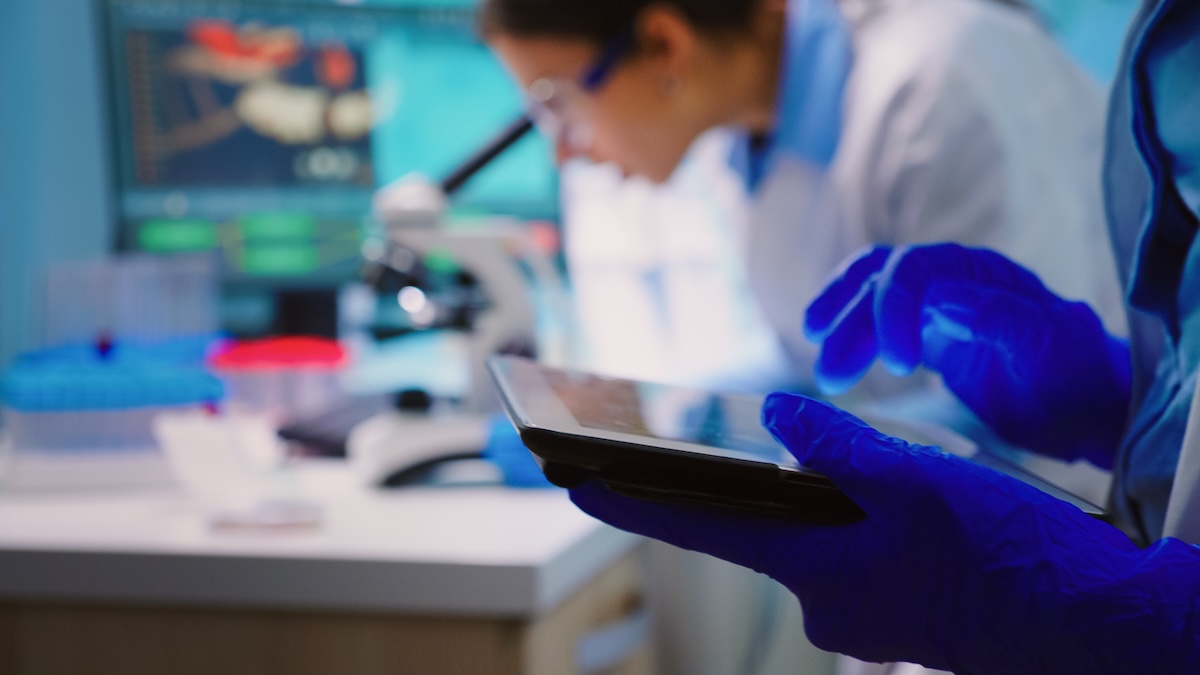
By Xisca Borrás and Ellie Handy of the life sciences regulatory department at Bristows law firm
Femtech, short for female technology, is an important and fast growing sector. The EU is a key market for femtech, with five of the top 10 countries for femtech investment located in the EU.
Femtech products are developed for many areas of women’s health, such as menstrual health, pregnancy planning and monitoring, menopause and mental wellbeing.
As femtech is intrinsically linked to health needs, a key question for femtech products is whether they are regulated as medical devices or merely consumer products.
Additionally, many femtech products are embracing the use of artificial intelligence (“AI”). Therefore, another key question is whether products using AI will be regulated as “high-risk” AI systems under the EU’s new AI legal framework.
This article looks at when femtech apps and software qualify as medical devices in the EU and how the medical device and AI legal frameworks interact.
What is a software medical device?
The definition of “medical device” in the EU’s Medical Device Regulation 2017/745 (the “EU MDR”) includes software, used alone or in combination, that is intended by its legal manufacturer for a medical purpose. These medical purposes are listed in the EU MDR and include (amongst others):
- diagnosis, prevention, monitoring, prediction, prognosis, treatment or alleviation of disease;
- diagnosis, monitoring, treatment, alleviation of, or compensation for, an injury or disability; and
- control or support of conception.
The legal manufacturer is the person that puts their name/branding on the device, and takes responsibility for it.
Whether software is considered a medical device will depend on whether the manufacturer states it has a medical purpose in the relevant documentation/materials.
The EU MDR defines intended purpose as “the use for which a device is intended according to the data supplied by the manufacturer on the label, in the instructions for use or in promotional or sales materials or statements and as specified by the manufacturer in the clinical evaluation”.
What is the test for qualifying as a medical device in the EU?
There is a selection of guidance documents that can assist you in determining whether a product should qualify as a medical device. We summarise some of the key guidance below:
- MDCG 2019-11 rev.1
Under the EU MDR, the Medical Device Coordination Group (“MDCG”) has published guidance on the qualification and classification of software as a medical device. It sets out five decision steps to help determine if a piece of software is a medical device in the EU. The steps are:
- Step 1: Is the product software?
- Step 2: Is it standalone software (i.e., it is not an accessory nor driving/influencing the use of a hardware device) and does it not fall within Annex XVI?
- Step 3: Is it performing an action on data beyond storage, archival, communication, simple search or lossless compression?
- Step 4: Does it act for the benefit of an individual patient?
- Step 5: Does it have a medical purpose (as set out in the medical device definition)?
If the answer to all five questions is yes, it will qualify as a medical device. In this case, manufacturers will have to ensure they comply with the pre-market requirements set out in the EU MDR before they can place the software medical device on the market.
Notably, they will need to set up a qualify management system, compile a technical file, undergo the appropriate conformity assessment and affix a CE mark.
Importantly, the manufacturers would also need to consider post-market requirements, such as having a post-market surveillance system and undertaking post-market vigilance.
3. Other relevant guidance
The MDCG has also published a manual on borderline and classification of medical devices under the EU MDR.
Additional sources of guidance may also be available from national competent authorities. The legal manufacturer could also look at examples of other products already on the market to see how they are regulated (e.g. looking at EUDAMED). Although, we would caution anyone relying too heavily on the regulation of other products as there is no guarantee they are compliant.
What if you’re not a medical device?
If the software does not qualify as a medical device, the product will not have to comply with the EU MDR.
However, the manufacturer should be careful about how it promotes its product and the claims it makes about it because, as discussed above, a medical device is defined based on the manufacturer’s intended purpose.
Let’s take the example of a mere period app. Using it for logging period dates, tracking ovulation, and predicting future cycles has no medical purpose and is therefore not a medical device.
However, if its manufacturer recommends this piece of software for contraception and/or to support conception it will suddenly have a medical purpose and so, it would qualify as a medical device.
As such, the manufacturer would either have to bring the device into conformity with the EU MDR or take action to change the promotional materials to remove the medical claims.
Interaction between medical devices and AI legal frameworks
Under the EU MDR, devices are assigned risk classifications. For the lowest risk devices (Class I medical devices), the manufacturer can self-certify compliance with the EU MDR prior to the product being placed on the market or put into service in the EU.
However, high risk devices (Class IIa or above medical devices) must undergo a third party conformity assessment carried out by a notified body.
Notified body conformity assessments require a detailed review of the manufacturer’s quality management system, technical documentation, systems and procedures.
The process will often take more than a year to complete. Additionally, manufacturers have to grapple with ongoing burdens such as vigilance and post-market surveillance.
Under the EU MDR, most software as a medical device will be classified as a Class IIa or above.
Like the EU MDR, the EU’s Regulation (EU) 2024/1689 (the “AI Act”) also distinguishes between AI systems that pose different levels of risk.
The AI Act imposes onerous obligations on “high risk” AI systems, including in relation to accuracy, transparency, risk management, data quality and governance, and human oversight.
Although there is some overlap between the EU MDR and AI Act requirements, many are new AI-specific obligations. These pose a significant additional regulatory burden, increasing the complexity and cost of compliance for stakeholders.
Notably, the risk classification of an AI system that is itself, or is included in, a medical device is linked to the device’s classification under the EU MDR. Under the AI Act, AI systems are classified as “high risk” systems if:
(a) the AI system is a safety component of a medical device or the AI system itself is a medical device; and
(b) the medical device is required to undergo a third-party conformity assessment under the EU MDR.
Therefore, low risk medical devices (i.e., Class I medical devices) that are self-certified cannot be “high risk” AI systems.
Whereas, any device that requires a notified body to perform its conformity assessment will be a “high risk” AI system, and so will be subject to the additional AI Act requirements.
Unfortunately for those wishing to avoid the “high risk” AI system requirements, there are relatively few Class I devices under the EU MDR.
Therefore, the majority of medical devices that are an AI system or have an AI system as a safety component will qualify as a “high risk” AI system.
One notable example of a Class I device is software intended to support conception by calculating the user’s fertility status based on a validated statistical algorithm.
If this kind of software medical device is also an AI system, it would not be classed as a “high risk” AI system, so it would not be subject to the more onerous requirements in the AI Act.
However, the manufacturers of these devices would need to carefully consider any product developments that add additional functionality, as this can impact the risk classification of the product under both the EU MDR and AI Act.
For example, if the manufacturer added functionality to the Class I device so it could also be used as a means of contraception, it would become a Class IIb medical device and would need a third party conformity assessment.
In turn, as the software is also an AI system, this would mean the AI system would be considered “high-risk” and be subject to additional regulatory requirements under the AI Act.
Whilst AI has the potential to provide tremendous benefits for femtech, it also triggers additional complexity that can be time-consuming and costly to navigate.
It is important to get it right in terms of compliance in order to maintain consumer trust, avoid regulatory penalties, and pave the way for long-term success and viability.
By Xisca Borrás, Partner – Life sciences regulatory and Ellie Handy, Senior Associate – Life sciences regulatory at Bristows law firm.
Hormonal health
How digital twins are making clinical trials more inclusive
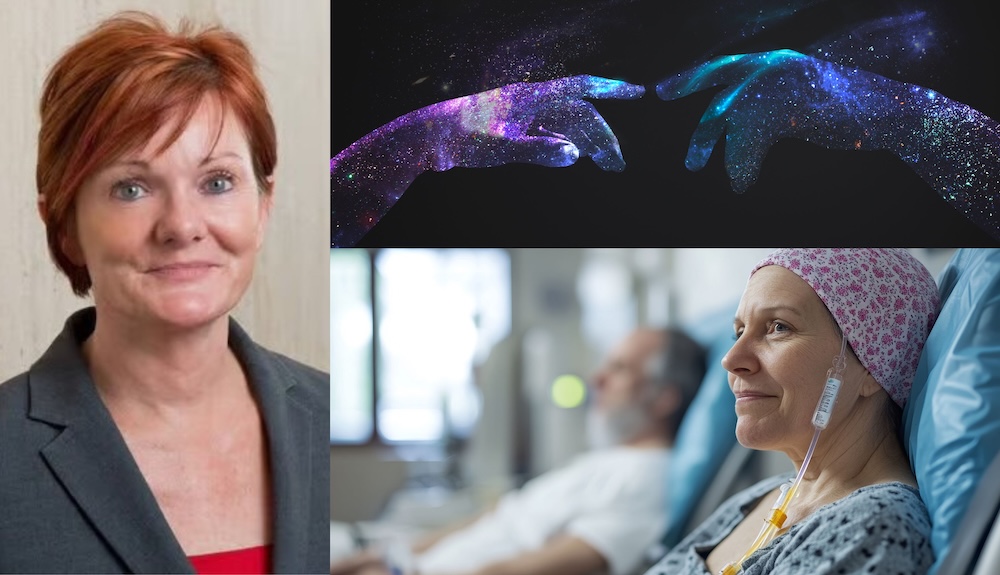
For decades, women have been excluded from clinical research, but AI-powered digital twinning is helping make trials safer, more inclusive, and more representative of real patients.
For Karen Yeo, innovation is not just about technology, but how it is used to change things for the better.
Yeo (pictured top left) is senior vice president of client and regulatory strategy at Certara, a biosimulation company focused on “transforming drug development for good”, which since 2014, has supported 90 per cent of novel FDA drug approvals.
Yeo and her team are using AI to make scientific research more inclusive by creating digital twins, matching the characteristics of a real patient with their digital counterpart to predict optimal dosing.
Women, particularly pregnant women, have typically been excluded from clinical trials for decades.
In 1977, following the thalidomide crisis of the 1950s and 1960s, the US FDA introduced guidelines preventing women of childbearing age from participating in many studies to avoid possible risks to pregnancies.
This was eventually lifted by the FDA in 1993, and the same year, the National Institutes of Health issued its Revitalisation Act, which required the inclusion of women and minorities in federally funded clinical research.
But while these changes opened the door to more representative trials, pregnant women continued to be excluded due to safety and ethical concerns.
“[Researchers] fear that exposing expectant mothers and their babies to experimental medicines could cause harm, so the default has been to leave them out,” Yeo tells Femtech World.
While “well-intentioned”, policies which prevented them from participating in clinical trials have contributed to “major gaps” in our understanding of how treatments work in women, and slowed down access to potentially life-saving treatments, leaving them facing “more risk, not less”, says Yeo.
“The result is a healthcare system where women are underserved,” she adds. “And both mothers and infants miss out on advances that could have been better supported through careful, inclusive trial design.”
The evidence gap
Excluding women from trials has delayed access to lifesaving therapies, and without the right evidence, clinicians often prescribe medications off-label during pregnancy with little understanding of how those drugs behave in women’s bodies.
For years, drug dosing was determined largely from small studies in men, even though women may metabolise and respond to drugs differently, Yeo explains.
“This gap has contributed to higher rates of adverse drug reactions in women and less clarity about the effectiveness of medicines in conditions unique to them, such as pregnancy and postpartum care,” she says.
Yeo points to the example of the antimalarial drug primaquine.
Pregnant and lactating women have typically been excluded from primaquine studies, leaving physicians without the right guidance.
Using biosimulation, Yeo and her team took the findings from a small clinical study conducted in breastfeeding women and were able to predict infant and newborn drug exposures through breast milk.
“The results provided evidence of safe dosing of primaquine in mothers, showing how model-informed methods can begin to close those gaps,” she adds.
Digital twins
By creating virtual representations of women’s physiology, including during pregnancy, biosimulation can predict how a drug will behave in these populations without exposing patients to any unnecessary risk.
This allows regulators and clinicians to access insights early and encourages trial sponsors to include women more confidently.
“Models can estimate how a drug transfers through breast milk, giving trial designers a foundation for guidance before patients are enrolled,” Yeo explains.
“This reduces ethical concerns by minimising direct risk while still advancing inclusive research.
“Over time, it shifts the approach from protecting women from research to protecting them through research.”
These digital twins start as virtual populations, representing typical physiological scenarios. But as more personalised clinical data become available in pregnant women, these can be replaced by digital twins.
These are digital replicas of individual patients reflecting real-time individual physiology.
Yeo says these AI-powered digital twins can provide a safe way to generate evidence in individuals that are difficult to study directly, such as pregnant women with preeclampsia.
While no model has yet perfectly captured human biology, Yeo says biosimulation has advanced to a point where it can reflect many of the complexities of women’s health.
“Virtual populations can account for physiological changes during pregnancy, such as altered metabolism, which can affect the exposure of the drug across each of the trimesters,” she says.
“Rather than oversimplifying, they provide a framework that can help inform decision-making for clinicians.
“As real-world and clinical trial results with personalised data become increasingly available, virtual populations can evolve into more complex digital twins.”
“Safeguards start with data”
But as with any AI-driven technology, poorly designed models or those that rely on narrow datasets risk reinforcing existing biases, rather than correcting them.
Yeo says “safeguards start with data”.
Certara emphasises reproducibility and clear documentation, allowing every assumption to be reviewed, and works closely with regulators, clinicians, and patient advocates.
“Trust grows through representation and openness,” she continues.
“Patients need to see that the data behind digital twins includes people like them, and that models continue to be refined with clinical and real-world evidence.
“Clear communication about how the models work and why they matter helps show that these tools are designed with patients in mind.
“By involving women directly, researchers can ensure the models address concerns that matter most, from pregnancy safety to postpartum care.
“When women see that their priorities influence science, they are more likely to trust and benefit from it.”
Accelerating innovation
Having more inclusive datasets will also accelerate innovation in femtech, ensuring developers design new diagnostic tools and therapies for women’s health based on representative science, while data and insights collected through biosimulation can potentially shorten the timeline to regulatory approval.
“Femtech innovation depends on evidence that reflects women’s realities,” says Yeo.
“Digital twins make this possible by generating early data where traditional studies fall short.”
According to Yeo, AI is already having an impact on diversity in clinical trials, with regulators encouraging trial designs that use biosimulation to fill data gaps.
She believes digital twins could become a standard part of trial planning to ensure underrepresented groups are included within the next five years.
“Inclusivity will take time, but the momentum is here. Each step toward more representative datasets and more confident dosing guidance brings us closer to equitable clinical research.”
So what does success look like? That depends on the stakeholder, says Yeo.
For Yeo and her team, it’s being able to generate virtual subjects that reflect the characteristics of the patients receiving the medicine, giving a more realistic view of how therapies perform in practice.
For regulators, it’s the ability to approve drugs with confidence that dosing and safety information work across diverse groups.
And for patients, it is the assurance that the evidence was generated with their needs in mind.
“Success is not about technology alone,” adds Yeo.
“But about the trust and outcomes it creates for people who were once excluded.”

 Diagnosis17 hours ago
Diagnosis17 hours agoDozens of women report suffering painful burns after using Always sanitary towels

 Opinion2 weeks ago
Opinion2 weeks agoFDA plans to revise black box warning on menopause hormone therapies

 Entrepreneur2 weeks ago
Entrepreneur2 weeks agoAI-powered women’s health companion Nexus launches in UK

 News2 weeks ago
News2 weeks agoScientists turn human skin cells into eggs in IVF breakthrough

 News7 days ago
News7 days agoWomen’s health innovations recognised in TIME’s Best Inventions 2025

 Wellness2 weeks ago
Wellness2 weeks agoDaily pill could delay menopause ‘by years,’ study finds

 News2 weeks ago
News2 weeks agoAncient herb to modern must-have: Why ashwagandha is capturing UK women’s attention
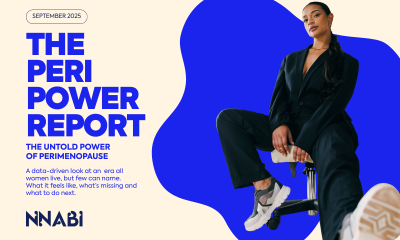
 Menopause3 weeks ago
Menopause3 weeks agoNew report exposes perimenopause as biggest blind spot in women’s health

















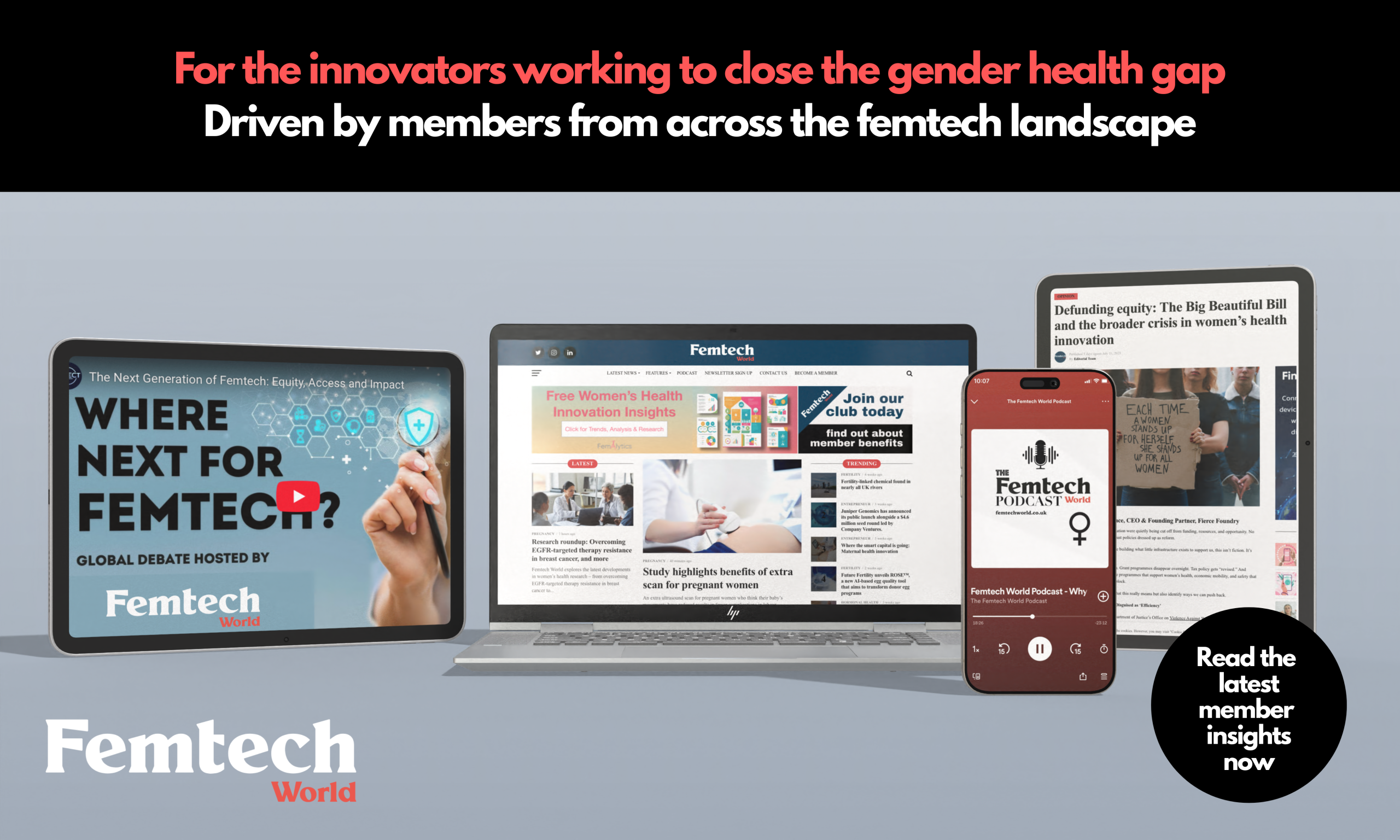











Pingback: Strava partners with Hot Girl Walk creator to advance gender justice in sports - FemTech World
Pingback: Nike launches leakproof period shorts ahead of Women’s World Cup - FemTech World
Pingback: Vodafone partners with Wales Women’s rugby team to track periods and performance - FemTech World
Pingback: Ditching white shorts “only touches” on the support women need in sport, say experts - FemTech World
Pingback: ‘I was hooked’- Jennifer Aniston joins functional fitness brand Pvolve - FemTech World
Pingback: Les Mills launches toolkit to help women stay active throughout their menstrual cycle - FemTech World